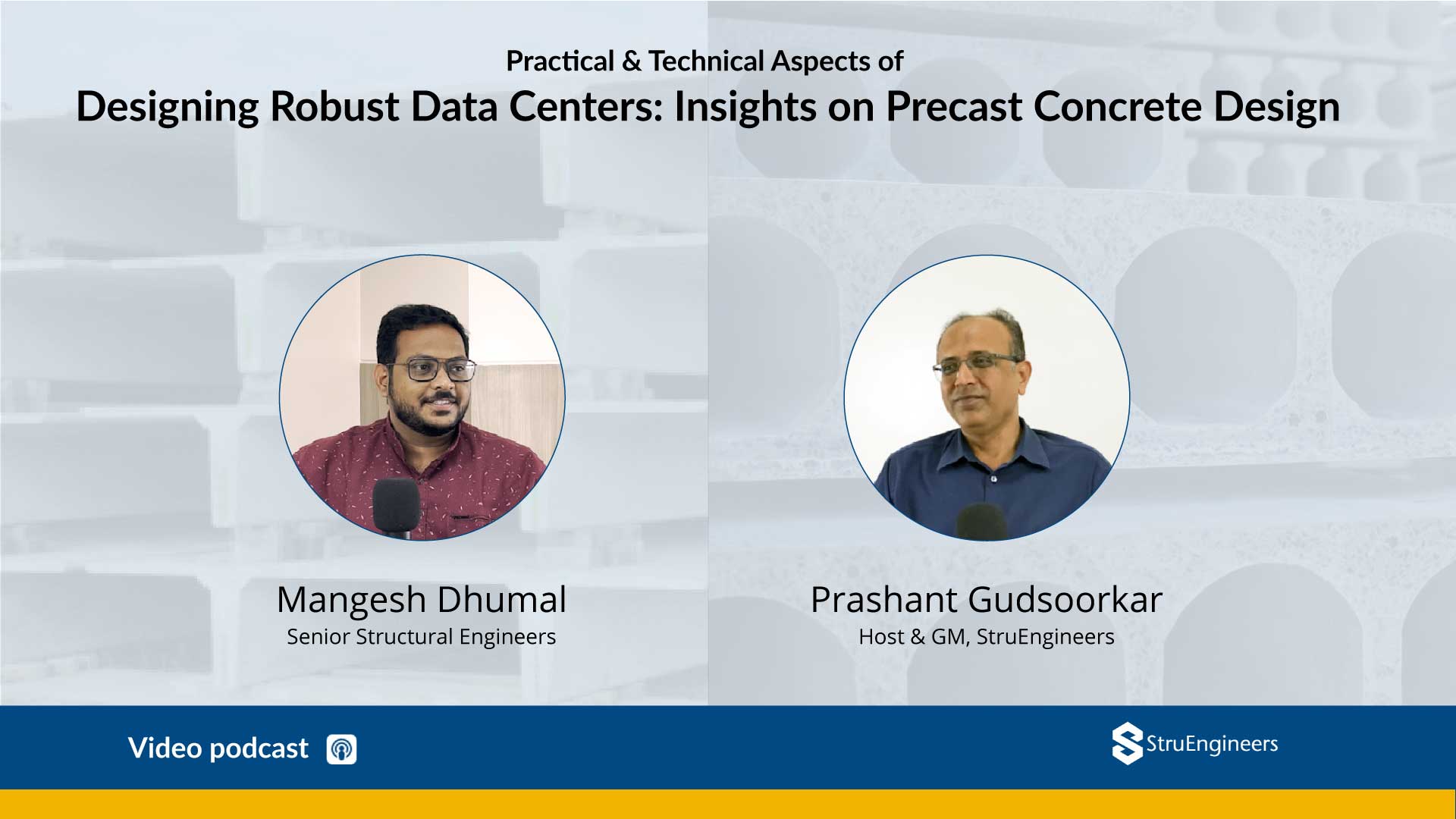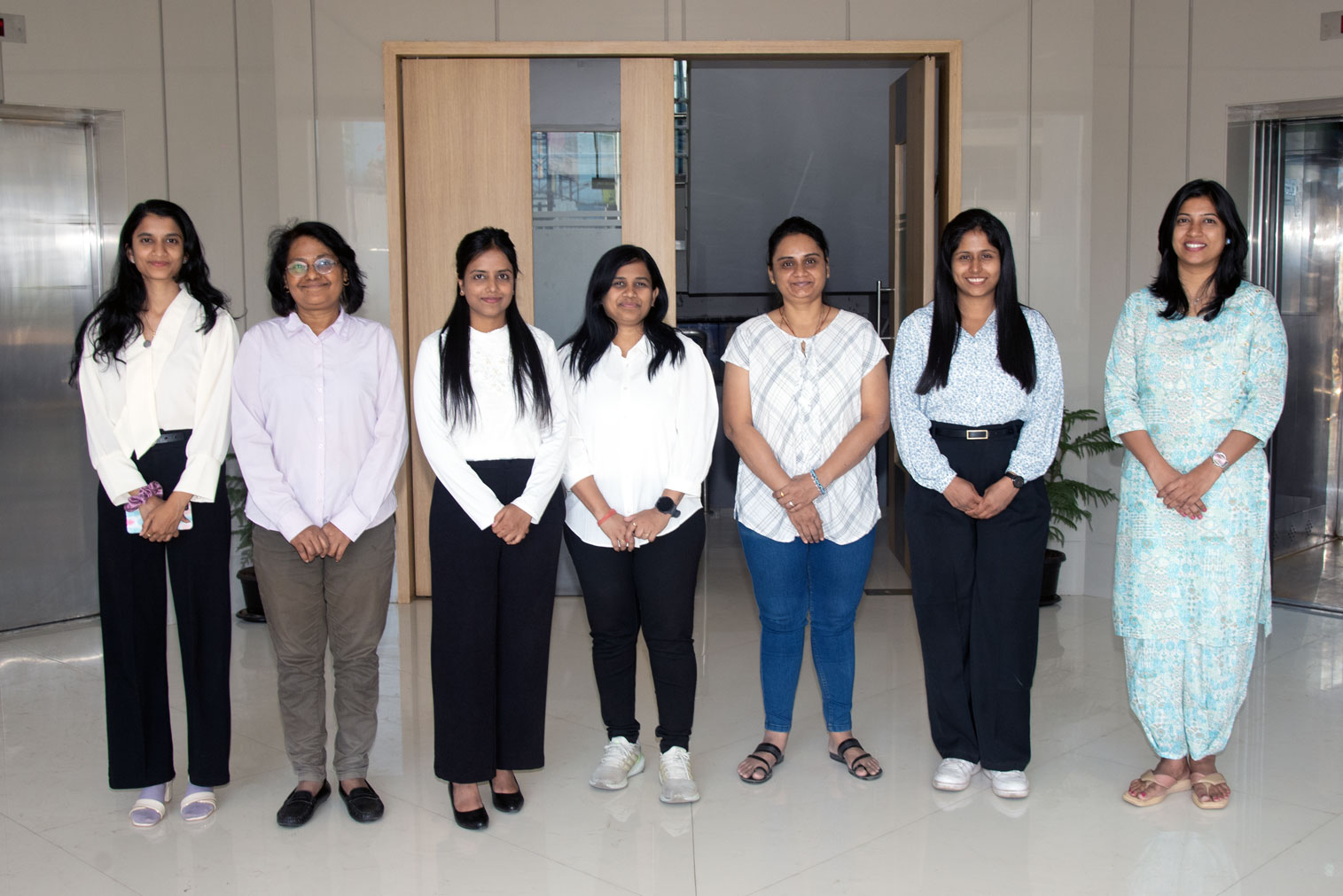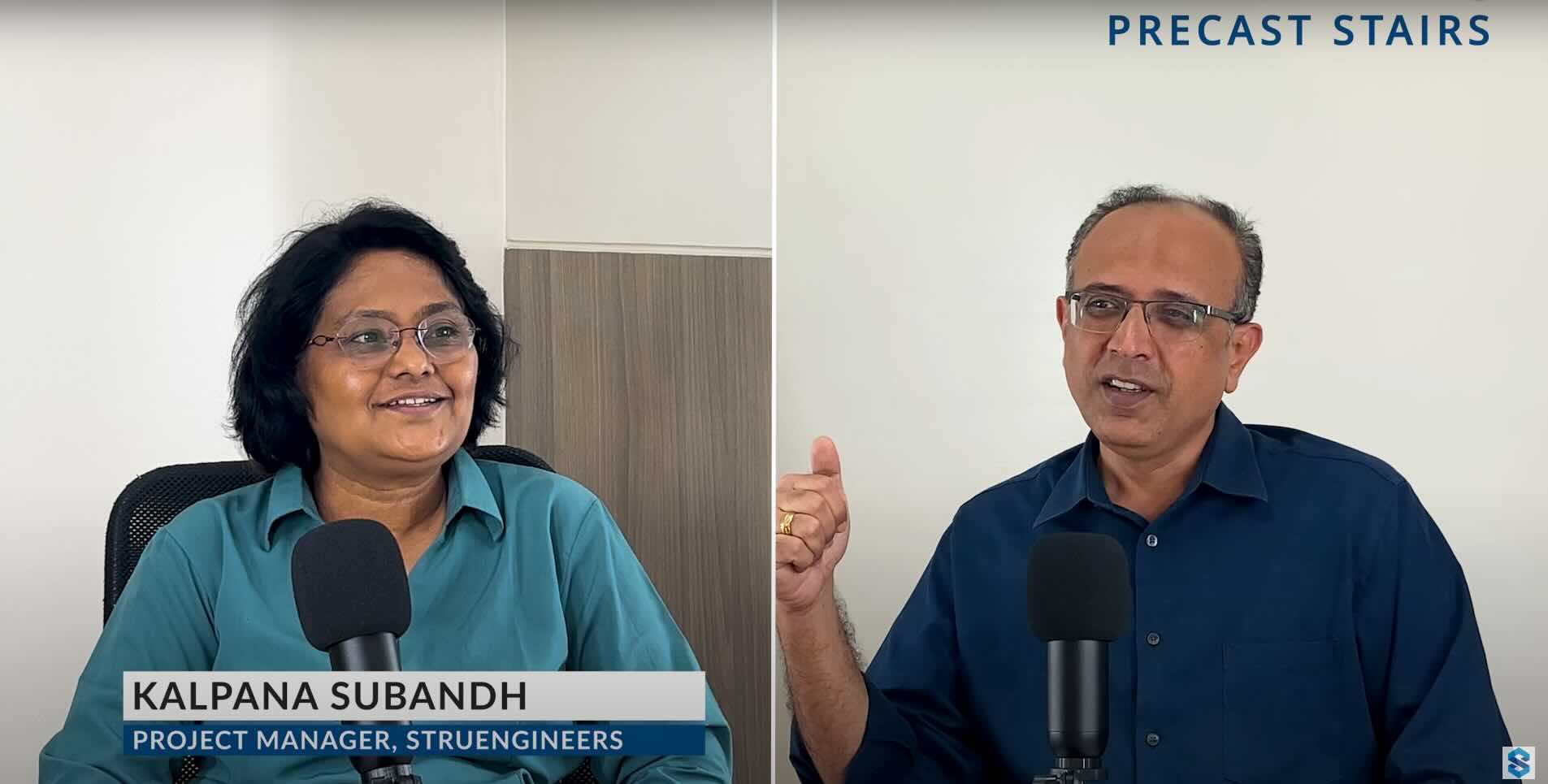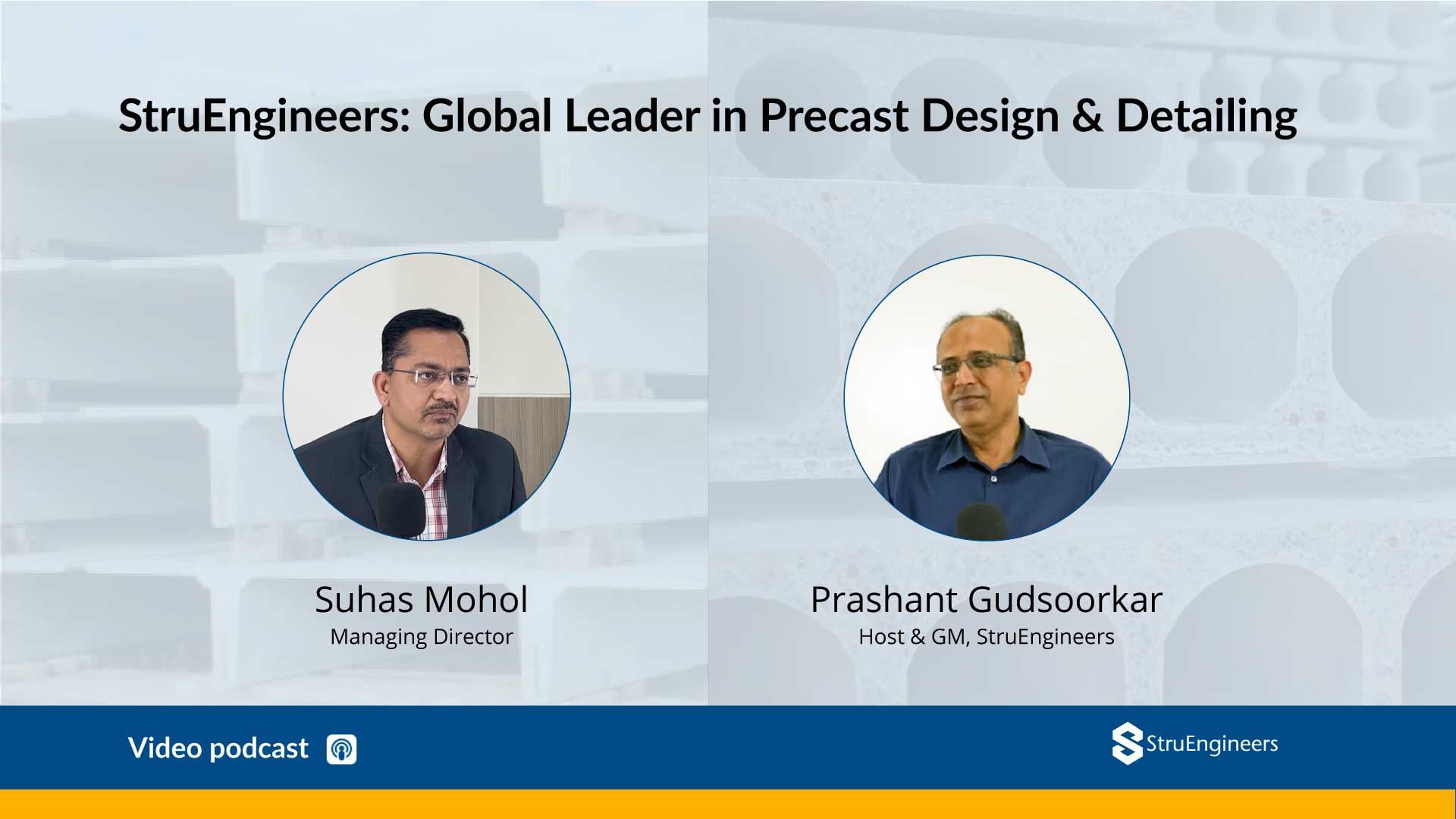Designing robust data centers involves careful consideration of various technical and structural elements, especially when employing precast concrete methods. In this podcast, we delve into the practical and technical aspects of designing a data center building using precast concrete. Hosted by Prashant and featuring Mangesh Dhumal, a seasoned structural engineer, this discussion explores the unique challenges and solutions encountered during the construction of a large data center in Nigeria. The focus is on the hybrid structure approach, the design considerations for static loads, and the critical role of joint integrity in ensuring structural stability.
Prashant: Welcome, friends, to yet another podcast on precast structural design engineering. We did a podcast a couple of weeks ago regarding a multi-storied parking building in precast, where we looked at various design aspects that go into making such a structure. Today, we thought we’d take up another structure that deals with static loads. Last time, we dealt with a dynamic load structure, which was a parking structure. This time, we’re focusing on a static load structure. We have once again with us my colleague Mangesh, who has graciously spared his time to join us. Welcome, Mangesh! It’s very difficult to get you off the chair and here, so thanks for being with us once again.
Mangesh: Thank you, Prashant. I’m fine and looking forward to our discussion.
Prashant: Last time, we discussed the parking building in precast, and I’ve seen you working on a lot of different structures in precast elements. Very recently, we completed a data center building in precast for a client in Nigeria. If I’m not wrong, the building was quite large—about 220,000 square feet. I’ve seen you spending a lot of time on the design engineering, and then, of course, the detailing team took over. So, tell me, what are the prime considerations when we talk about a data center building in precast?
Mangesh: A data center is a server-containing structure, so it involves significant server loading. This loading is specific and often provided directly by the client. Unlike other commercial or residential buildings where loads are generally predefined in codes, data center loads are specific to the equipment. This makes the design process unique but not entirely different from other structures. The load specifications are critical and have to be meticulously accounted for in the design.
Prashant: Yes, unlike a mall or a school where the load varies dynamically, a data center has heavy, static loads from the servers, which continuously exert pressure on the structure. What elements were used for this particular building?
Mangesh: The primary elements used were hollow-core slabs, pre-stressed beams, and columns. For the core areas, such as the staircase and lift cores, we used RCC walls. The columns, however, were cast on site.
Prashant: Why is it that columns are generally cast on-site? I’ve seen this practice in many structures, except in the Middle East, where they use all precast elements. What makes this project different?
Mangesh: This type of structure is referred to as a hybrid structure, where both cast-in-place and precast concrete are used. In some cases, steel might also be involved. For this project in Nigeria, the columns were particularly heavy, so casting them on-site was more feasible. This approach didn’t waste any time; while the columns were being cast, the precast beams and hollow-core slabs were manufactured and prepared for installation.
Prashant: So, technically, you didn’t lose any time because the columns were cast on-site while the other elements were being prepared. Coming to the hollow-core slabs and pre-stressed beams, how did you approach the design engineering for these elements?
Mangesh: We conducted two types of analysis—software-based and manual calculations. First, we used pre-stressed design software and then validated the results with manual calculations. This dual approach ensures accuracy and consistency in the design process. We also used 3D frame software to simulate and check the forces, such as moment and shear, to ensure they matched our initial calculations.
Prashant: Is it necessary to validate the software calculations manually? Why do you do that?
Mangesh: Yes, it’s crucial. Preliminary manual calculations give us an idea of what the deflection, moment, and sizes should be. If something doesn’t match, it indicates an issue, either in our calculations or within the software itself. Continuous validation helps us ensure that the design is sound.
Prashant: Interesting. Now, what about heat management? Servers emit a lot of heat. Were there any special design considerations for managing heat?
Mangesh: For data centers, we consider a fire rating exposure, typically around 120 minutes. Based on this rating, we decide on the cover thickness of the elements, which is the distance between the outer surface and the reinforcement. For this project, we used covers of 50 mm to 75 mm. Additionally, the client applied lightweight insulation around the walls, which didn’t add much to the load but provided the necessary thermal protection.
Prashant: That makes sense. Now, coming to the structural stability of any precast structure, joints are critical. In this case, we’re talking about a building with a load of 20 kilonewtons per square meter. What kind of joints were considered?
Mangesh: Nigeria is a seismic zone, so we designed the hollow-core slabs to act as diaphragms. This required the connection between the slabs and beams to be strong, involving reinforcement and shear transfer mechanisms. The beam-column joints were particularly critical. Each joint was different, with varying reinforcement arrangements, making standardization difficult. We also couldn’t use corbels due to the client’s requirement for clear height for server installation, which added to the complexity.
Prashant: So, each joint was unique, with different reinforcement due to the non-uniformity in load and alignment changes. This would have made the design phase quite extended, right?
Mangesh: Yes, the frequent design revisions were due to numerous cutouts and alignment changes required for the MEP (Mechanical, Electrical, and Plumbing) systems. In some cases, we had to suggest cast-in-place slabs instead of hollow-core slabs due to large cutouts affecting the structural integrity. This made the project a truly hybrid structure.
Prashant: Fascinating. It’s clear that this was a complex project with many learning opportunities. I’m sure it added a lot to our knowledge base. We’ll continue exploring more such projects in future podcasts.
Mangesh: Yes, absolutely. It was a challenging project, but a great learning experience.
Prashant: Thank you for being here. It was a pleasure discussing this with you, and I’m sure our audience will find it insightful as well.
Mangesh: Thank you, Prashant. It was my pleasure.
Prashant: So, friends, we had yet another interesting podcast. The purpose, as I said, is to come up with technical discussions supported by some kind of illustrations to give a glimpse into the design engineering aspect, which is very difficult to convey in a blog article or a case study on the website. I hope you all enjoyed it, and in case you have not seen our first podcast, we have included the link in the YouTube description, so please make sure that you have a look at it as well. Thank you very much.
Conclusion:
This podcast provided a deep dive into the technical aspects of designing a robust data center using precast concrete elements. The project in Nigeria presented unique challenges, from managing static loads and heat to ensuring structural stability through precise joint design. By adopting a hybrid approach, the team successfully balanced on-site casting with the advantages of precast construction, ultimately delivering a stable and efficient structure. As we continue to explore various precast applications, the insights gained from this project will undoubtedly inform future designs. Stay tuned for more discussions on commercial and residential precast projects in our upcoming podcasts.
You can watch the full discussion below:



